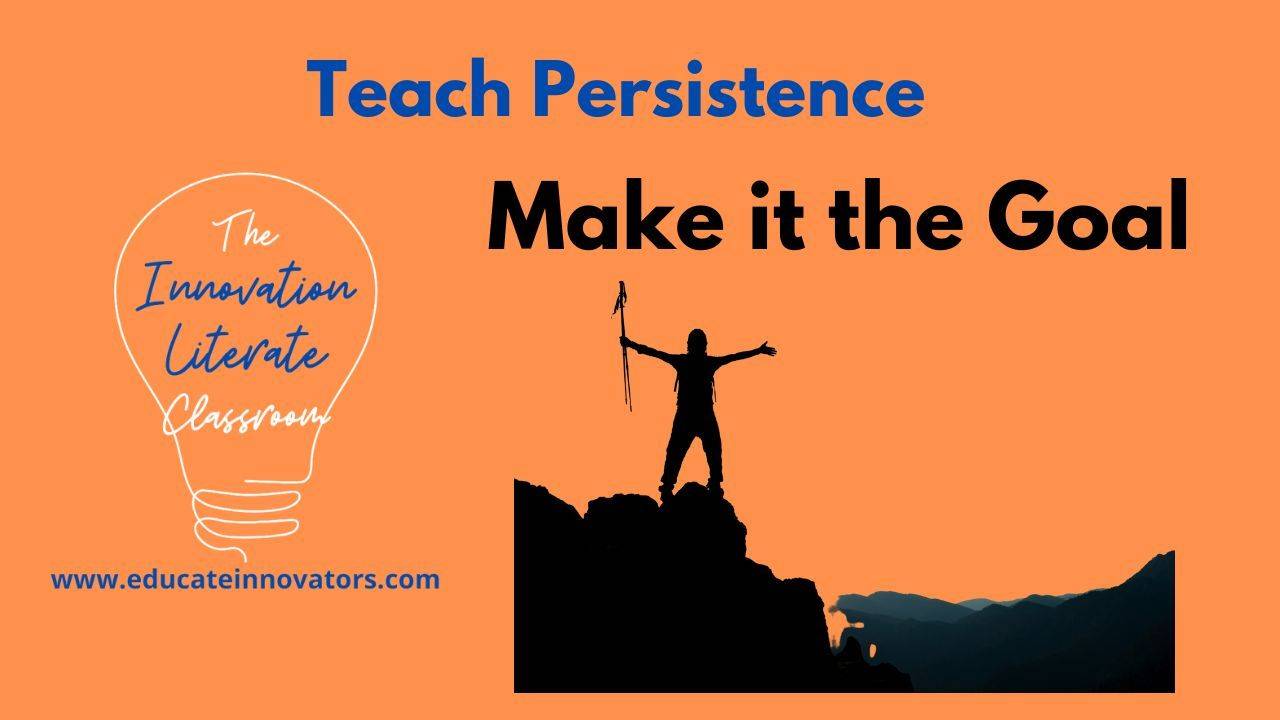The Innovation Literate Classroom
Teaching Tips
What is your go-to gadget or tool that makes your life easier or saves the day? My husband used to say that he could fix anything with a paper clip or duct tape! I don’t know how that’s borne out, but we do find unusual and handy uses for bulldog clips (we have a lot of those around the house from y...
Dr. Jeanne L. Paynter
Our minds tell us “Persistence Stories.” We tell ourselves, “I’m persistent. I can focus my energy on a task and keep working when it’s difficult.” Or, perhaps our minds tell us, “I’m not persistent. I’m scattered, hesitant, uncommitted.” Where do these stories come from? Ou...
Dr. Jeanne L. Paynter
As we saw in Tip 1, metacognition is “above and beyond” thinking. We use metacognition when we ponder: “What is the best way to solve this problem? Am I being successful with this strategy, or do I need to make modifications? What goals motivate and engage me? What are my stre...
Dr. Jeanne L. Paynter
“Stop, look, and listen before you cross the street.” This is an early example of how we teach children metacognition: literally, thinking about (our) thinking. Metacognition is that “above and beyond” analytical thinking we use to set goals, plan, select appropriate problem-s...
Dr. Jeanne L. Paynter
Why do some learners have negative mindsets about their aptitude for persistence?
Traumatic experiences are likely to result in wrong “cause and effect” stories our mind forms about our persistence, such as: I’m helpless, hesitant, unsure, disconnected, unmotivated, aimless...
Dr. Jeanne L. Paynter
I’ve been reading a new book, Mind Your Mindsets, and discovered something about our marvelous brain: It continually seeks to make meaning from our memories and experiences and form “stories” or narratives that help us function. The stories are mostly helpful, until they’re no...
Dr. Jeanne L. Paynter
Recently I talked with an art teacher who lamented a student’s lack of persistence. She developed a unit on wire sculpture based on the work of a local street artist, REED bMore. He creates and hangs wire sculptures of pop characters above traffic lights “just to make people s...
So far, we’ve explored the importance of explicitly teaching the concept and attributes of logical reasoning as an aptitude that innovators use in the convergent (focused) stages of creative problem solving (Teaching Tip 1). We’ve seen how we can make it an instructional goal that focuses students ...
I'd like to share a tried-and-true instructional strategy you can use to develop learner's logical reasoning: concept attainment. This strategy enables you to “teach the content” while you develop learners’ aptitude for logical reasoning. You can use concept attainment with any of your required curr...
Tomorrow’s innovators (our children today) must become adept at open-ended (divergent) and focused (convergent) thinking. For example, their curiosity and creativity fuel open exploration of many interests and possibilities. Then, they must use logical reasoning to draw conclusions based on evidence...
Have you ever heard someone say, “That’s just not logical.” (Perhaps that person was you!). What makes reasoning logical?
Logical reasoning is a type of critical thinking that helps us to see the relationships among facts, deduce patterns and rules, and apply them to make objective judgements.
Wh...
I know you understand the importance of creativity as a 21st century skill for all graduates. In the past three Creativity Tips, I’ve shared ways we can develop it using the divergent/convergent thinking stages of Creative Problem Solving. Now, how do we assess it?
Perhaps, like me, you’ve added “...
We may not have the time or the discretion to implement the complete Creative Problem Solving process in our classrooms. I want to share with you three ways I have integrated CPS stages into my teaching so that you can decide which one will work for you.
The CPS process requires two distinctly diff...
Creativity Tip #1 introduced Creative Problem Solving (CPS) as a process to apply creative thinking in a unique and useful product, idea, or service— in other words, to innovate. The creative problem-solving process requires two distinctly different types of thinking: divergent (open) and convergent...
In our homes and classrooms, children exhibit creativity when they express new or unusual ideas and connections, enjoy imagining, inventing, and divergent thinking; and they initiate new projects based on their ideas.
Creativity empowers us to “Think Different,” the mantra of Apple founder Steve Jo...
Q: What capacity doesn’t diminish over our lifetime?
A: Our capacity for curiosity!
Children are naturally curious, aren’t they? Their motivation is to explore, question, and imagine. As parents and educators, we always want to nurture curiosity at every age and stage. Curiosity fuels the joy of l...
SIGN UP FOR OUR WEEKLY SERIES
The
Innovation Literate Classroom
Learn practical tips to teach all learners how to apply across disciplines "the aptitudes of innovators," those creative problem solvers who will change our world for the better.
You're safe with me. I'll never spam you or sell your contact info.

















